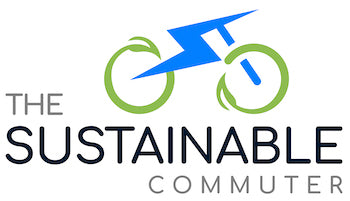
Elements of a Sustainable Transportation System
Share
Sustainable Transportation Systems and Financial Support
Sustainable transportation systems are essential for addressing climate change, reducing pollution, and ensuring equitable access to transportation. They provide efficient, affordable, and environmentally-friendly options for people to travel. In this blog post, we will explore the key elements of a sustainable transportation system and discuss the importance of financial support and investment in building such systems.Key Elements of a Sustainable Transportation System
Diverse Modes of Transportation: A sustainable transportation system should offer a variety of transportation modes to cater to the needs of different individuals and communities. This includes options such as cars, bicycles, walking, and public transportation. By providing diverse transportation choices, people can choose the most convenient and environmentally-friendly option for their specific journey.
Public Transportation: Public transportation plays a crucial role in sustainable transportation systems. It allows for the efficient movement of large numbers of people, reducing the number of private vehicles on the road and subsequently decreasing traffic congestion and emissions. Investing in high-quality, accessible, and affordable public transportation systems encourages more people to choose public transit over private vehicles, leading to a reduction in greenhouse gas emissions and improved air quality.
Active Transportation: Promoting and supporting active transportation, such as walking and cycling, is another key element of a sustainable transportation system. Encouraging and creating safe infrastructure for walking and cycling not only reduces emissions but also promotes healthier and more active lifestyles. Active transportation can be particularly beneficial for short-distance trips in urban areas, reducing the reliance on cars and mitigating traffic congestion.
Electric Vehicles: The transition to electric vehicles (EVs) is a significant step towards a sustainable transportation system. EVs produce zero tailpipe emissions and are more energy-efficient compared to conventional internal combustion engine vehicles. By promoting the adoption of EVs through incentives, charging infrastructure development, and research and development, we can accelerate the shift towards a greener transportation system.
Infrastructure and Policies: To support sustainable transportation, the development of appropriate infrastructure and the implementation of supportive policies are crucial. This includes building dedicated bike lanes, improving pedestrian infrastructure, and creating efficient public transportation networks. Additionally, policies that promote the integration of sustainable transportation options into urban planning and land use can help reduce the need for long-distance travel and encourage more sustainable transport choices.
Financial Support and Investment: Financial support and investment are essential for the successful implementation of sustainable transportation systems. Governments, businesses, and individuals all have a role to play in providing the necessary funding and resources. Investments in sustainable transportation can include the development of public transit infrastructure, the expansion of electric vehicle charging networks, and the improvement of walking and cycling infrastructure. Additionally, financial incentives such as tax credits, subsidies, and grants can encourage individuals and businesses to adopt sustainable transportation options.
Financial Support and Investment from GreenTransport
At GreenTransport, we are committed to supporting sustainable transportation and reducing our carbon footprint. We recognize the importance of investing in sustainable transportation systems, and we actively contribute to projects that promote greener and more efficient modes of transportation. Some of our sustainable transportation initiatives include:
Partnership with UrbanTransit: We have partnered with UrbanTransit to support the development of public transportation infrastructure in urban areas. This partnership aims to improve access to affordable and reliable public transit options, reducing the reliance on private vehicles and subsequently reducing emissions.
Electric Vehicle Charging Network: We have invested in the development of an extensive electric vehicle charging network to support the adoption of EVs. By increasing the accessibility of charging infrastructure, we aim to encourage more individuals to switch to electric vehicles and contribute to reducing greenhouse gas emissions.
Bike Share Program: We have launched a bike share program in collaboration with local municipalities to promote active transportation. This program provides residents with access to bikes for short-distance trips, reducing the reliance on cars and contributing to a cleaner and healthier environment.
